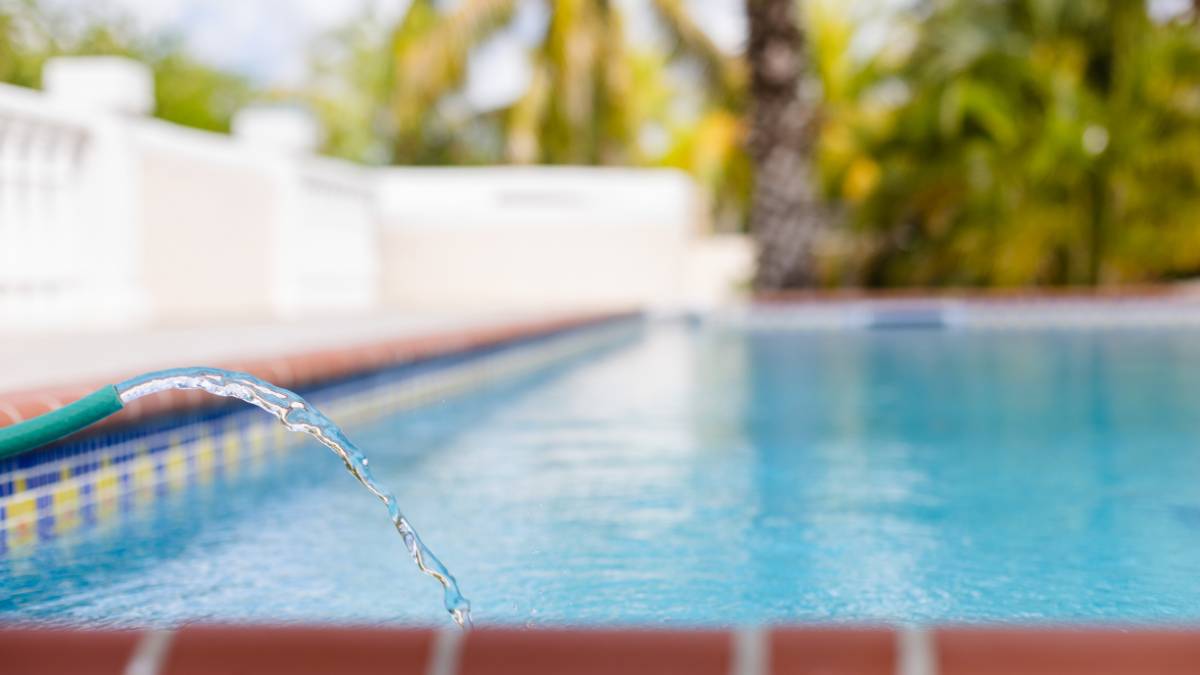Last Updated on December 18, 2023 by Kravelv Spiegel
Maintaining proper calcium hardness is a key aspect of pool care that often goes overlooked.
You want to consistently enjoy a sparkling and clear pool that always looks inviting. To achieve that aim you need to have an understanding of the impact of both low and high calcium hardness levels.
Using a pool maintenance company can ensure the longevity of your pool and provide a safe and enjoyable swimming environment for all, as they will have the know-how and experience to maintain the perfect balance of chemicals.
One of these essential parameters is the need to monitor calcium hardness.
In this pool-owners guide, we will explore the importance of calcium hardness in your pool and provide practical tips on how to manage it effectively.
Understanding calcium hardness
Calcium hardness refers to the concentration of calcium ions in your pool water. The ideal range for calcium hardness in a pool is typically between 200 and 400 parts per million (ppm).
Maintaining this balance is crucial for the longevity of your pool equipment. It helps the prevention of scale formation and improves the overall comfort of swimmers.
Appreciating the detrimental impact of low calcium hardness
Low calcium hardness levels can lead to several problems. When the water is too soft, it becomes aggressive and tends to leach calcium from various pool components, such as plaster, grout, and concrete.
This can result in etching and deterioration of pool surfaces, leading to costly repairs.
In addition, water with low calcium hardness can easily become corrosive. This causes damage to metal fixtures, including pumps, heaters, and filters. Swimmers may also experience skin and eye irritation due to the aggressive nature of the water.
Managing low calcium hardness
There are several steps to take that can help you to address low calcium hardness issues.
Increase calcium hardness by adding calcium chloride to the pool water. This is a quick and effective method to bring hardness levels within the recommended range.
Test the pool water regularly using a reliable test kit. This helps you monitor calcium hardness levels and take corrective action promptly.
If you are unsure about the appropriate dosage of calcium chloride or how to adjust calcium hardness, consult with a pool professional. They can provide guidance based on your pool’s specific needs.
Appreciating the Impact high calcium hardness can have on your pool
Conversely, high calcium hardness levels can result in scale formation. This can quickly make pool surfaces and equipment look unsightly.
Scale deposits can also clog filters and impede the efficiency of heaters. This leads to increased energy consumption and even potential equipment failure.
To address high calcium hardness, consider the following steps.
If calcium hardness levels are significantly elevated, partially drain and refill the pool with fresh water to dilute the calcium concentration.
Consider the use of sequestrants. These are chemicals that bind to calcium ions, preventing them from forming scale. Regular use of sequestrants can help control and manage high calcium hardness.
Regularly clean and maintain pool filters to ensure optimal performance and prevent the buildup of calcium deposits.
Regular testing and professional pool maintenance are the essential pillars of effective calcium hardness management. With these practices in place, you can enjoy the beauty of a crystal-clear pool for years to come.

